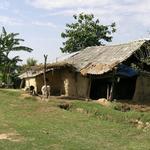Poverty dynamics among the Dalits of Tarai
The literature suggests that links between social identity and economic outcomes can induce poverty among groups with low social status. This seems to be true in Nepal where Dalits, the group at the bottom of the caste system, is also the group with the highest poverty rates. The aim of this thesis is to investigate determinants of poverty dynamics in a distinct village in the Tarai region of Nepal, where around half the population belong to Dalit castes.
The analysis uses quantitative data collected in a household survey done by the author in cooperation with the National Labour Academy (NLA) of Kathmandu. A main finding of the thesis is that Dalit households are more probable stuck at low human capital levels over time: Illiteracy is more likely to persist over two generations for Dalit than non-Dalit households. In the descriptive analysis, I furthermore find skilled wage labour in the modern sector of the economy to be a main pathway out of poverty for Dalits. Skilled workers are in turn found to be more likely to have education than lower-income unskilled workers.
https://bora.uib.no/handle/1956/7533






